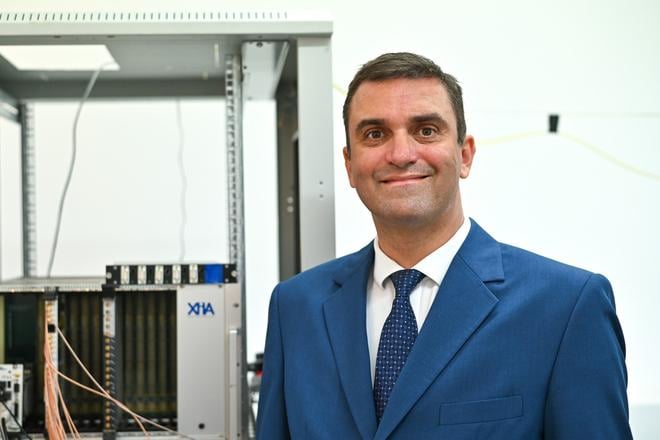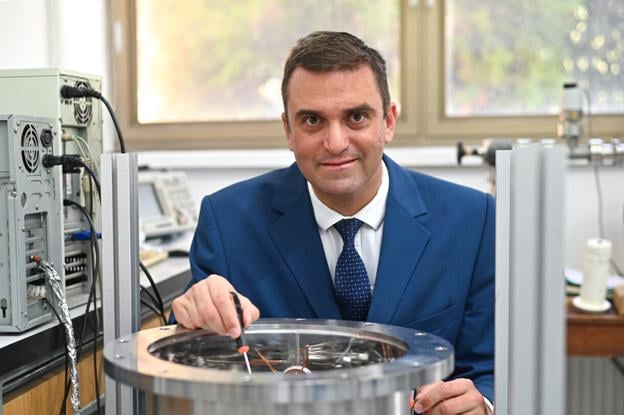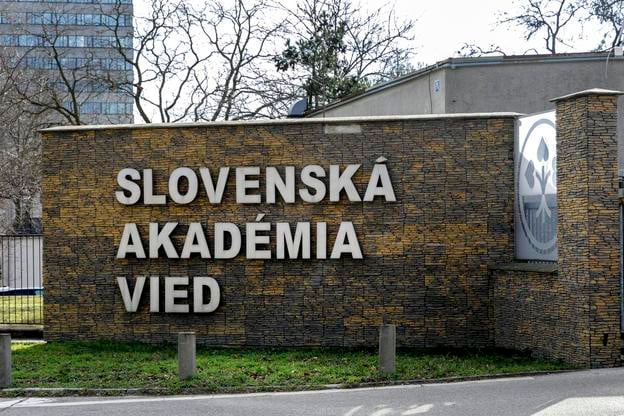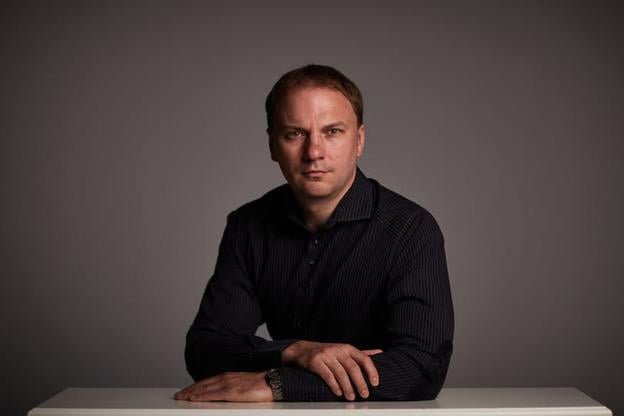A lot has happened in the past two months in science in Slovakia.
The new chair of the Slovak Academy of Sciences (SAV) was appointed in early June. The Slovak Spectator spoke to him just before he took up the post.
The academy has also launched another edition of its grant programme aimed at foreign scientists.
This overview also provides a selection of research conducted at universities and other institutions, including a unique discovery in Kuwait, the first English translation of the first Slovak novel, as well as science stories that have appeared on The Slovak Spectator website.
A new SAV president
On June 6, nuclear physicist Martin Venhart was appointed the new SAV president, a post he will hold for the next four years.
According to the SAV website, his priorities include supporting top-level basic and applied research, developing leadership training programs in science, and above all, strengthening public trust in the institution.
"I aim to continue the trends established at SAS by the outgoing President, Professor Pavol Šajgalík," he said, as quoted by the website.
As a nuclear physicist, Venhart studies the shapes of atomic nuclei. In a recent interview with The Slovak Spectator, he talked about why we currently cannot answer some questions scientists have on the subject and why his group may be one of the last in the world trying to find answers.
He previously led an SAV team that built a unique spectrometer called Tatra specifically for this purpose and used it at CERN. The team now wants to improve Tatra in order to learn more about the shapes of atomic nuclei, which is why they applied for the prestigious ERC Advanced Grant for established researchers to carry out ambitious projects in Europe.
In the interview, Venhart mentioned a decision on the funding would be known in June; the news is that although the proposal was evaluated with the highest grade, A, and recommended for funding, the grant was not financed due to insufficient funds allocated in this call.
"Receiving an A rating is a huge recognition of the long-term work of our entire research group. I especially value the reviews, which contain much positive feedback on our work and on the proposal itself, as well as very valuable criticism. This will allow us to significantly develop the concept of the proposed experiment and improve our proposal. I believe that next year we will not only achieve another A rating but will also secure the necessary funding,” Venhart said, as quoted by the SAV website.
The next deadline for ERC Advanced Grant applications is August 28, 2025.
Another round of the Impulz grant programme
At the beginning of June, SAV launched the 5th round of its flagship Impulz grant programme for top scientists from around the world. The call allows recognised scientists and highly talented researchers to carry out their projects in Slovakia.
According to SAV chair Martin Venhart, the scientists are expected to introduce innovative research ideas. The broader aim of Impulz is to strengthen SAV institutes, attract new talent, and boost their ability to compete for prestigious European grants.
Scientists holding a PhD or equivalent degree, who regularly publish in high-impact scientific journals, have been repeatedly invited to present their results at international conferences, have been principal investigators of scientific projects, and who can demonstrate sufficient experience gained at foreign institutions, are eligible to apply.
If selected, the projects can apply for funding of up to €160,000 a year. The call is open until September 2 this year, with April 2026 as the anticipated project start date.
Since its launch of the programme in 2021, 106 applicants from around the world have submitted proposals, with 12 projects gaining support.
Analysis of vaccines
In April, Health Minister Kamil Šaško (Hlas) was tasked by the government to request SAV's Biomedical Centre (BMC) to prepare a report on Covid-19 vaccines in Slovakia and provide an expert opinion on the impact of substances in the vaccines on the human body. Slovakia will not accept any Covid-19 vaccines while this is being done.
The BMC is carrying out its analysis in cooperation with the State Institute for Drug Control (ŠÚKL). The results should by known by the end of July.
"In today's world, we face a flood of dangerous misinformation—not only about vaccines. We believe it is necessary to strengthen public trust in scientific facts. We accepted this mandate with the aim of reassuring the public and bringing expert information into public discourse," said BMC director Silvia Pastoreková.
"As apolitical and scientific institutions, we will approach the analysis independently, with an emphasis on scientific ethics and integrity," she added.
The move came after Peter Kotlár, an MP and government-appointed investigator into Slovakia's pandemic response, claimed that the Covid-19 vaccines contain genetic material capable of altering human DNA. He likened vaccinated Slovaks to modified corn. Kotlár eventually made his analysis of the vaccines available in May.
In response, SAV said that, "the claims presented are not compared with existing scientific knowledge or verified by alternative methods, which is essential given the seriousness of the presented findings."
It also pointed out the journal which published the analysis is a so-called "predatory journal", a type of publication which often tries to obtain manuscripts from scientists and claim peer review, but fail to uphold academic standards.
More recognition for Slovak economist
Martin Kahanec, the co-founder and scientific director of the Central European Labour Studies Institute (CELSI), has received further recognition of his work. He has become the first Slovak to be appointed to the Group of Chief Scientific Advisors (GCSA) to the European Commission.
It follows Kahanec's election, in January, to the Board of Trustees of Academia Europaea and appointed Vice-President of Academia Europaea. The institution serves as a pan-European academy of sciences.
According to a CELSI press release, the goal of the GCSA is to provide high-quality, timely, and independent scientific advice to the College of European Commissioners on any subject to inform their decision-making, and thus contribute to the quality of EU legislation. The group is composed of up to seven advisors selected for their expertise. Kahanec was nominated by the Slovak Economic Association. He will serve for a three-year term starting May 2025.
"I look forward to contributing to evidence-informed policymaking in Europe, drawing on the vital role that social sciences play in helping societies develop and implement innovative solutions to their most pressing challenges," said Kahanec, as quoted by the press release.
According to RePEc, an international repository of economic publications, Kahanec is the most productive Slovak economist, among the top 9 percent in Europe. His research focuses on economic policy, labour and population economics, and migration, among others.
Overview of other research and development activities and news at institutions:
Slovakia is a step closer to a new supercomputer; SAV. After months of active preparation, the largest investment in high-performance computing technology in Slovakia is entering its implementation phase. SAV's Centre of Joint Activities will procure and operate the PERUN supercomputer, with a total budget of €40 million, funded from the Slovak Recovery and Resilience Plan. According to former SAV chair Pavol Šajgalík, the computer will allow scientists in Slovakia to keep up with their European peers in tackling complex problems across disciplines. Read more here.
Miracle in the desert: A discovery on Failaka Island in Kuwait; SAV. While investigating a 7th-8th century settlement located in the central part of the island in the Arabian Gulf, a joint Kuwaiti-Slovak research team uncovered a large well buried under layers of sand. Its remarkable state of preservation was not the only surprising find - after hundreds of years, the well is still producing abundant water. Read more here.
The first Slovak novel translated into English; SAV. The novel René, or: A Young Man's Adventures and Experiences, was first published in 1783-1785 at a time when Slovaks were part of the Kingdom of Hungary and subjects of the Habsburg Monarchy. This first English version, the work of award-winning translator David Short, also has an accompanying commentary on the historical context in which it was written. Read more here.
Agricultural landscape diversity is crucial for biodiversity; SAV. A team of scientists from SAV and two universities in Nitra studied spider communities in organic and conventional crop systems, since these small predators play a crucial role in agroecosystems. The research revealed a significant relationship between spider communities and environmental factors in both farming systems. Read more here.
Edible insects and mushrooms as potential alternative sources for the food industry; Slovak University of Agriculture in Nitra; lead scientist Eva Ivanišová. In cooperation with Polish scientists, the team studies selected species of edible insects and medicinal mushrooms in order to design recipes enriched with these promising alternative ingredients. Read more here.
Environmental Ecology; Comenius University; lead scientist Martin Motola. The research focuses on the development of nanomaterials with applications in environmental protection, specifically to help remove contaminants from water. The goal is to design nanomaterials that can capture or break down pollutants such as pharmaceutical residues and personal care products more effectively. Read more here.
Validation of spectrophotometric method for 63Ni activity determination in radioactive waste samples; Comenius University; lead scientist Oľga Rosskopfová. Present in nuclear waste, 63Ni is a nickel radionuclide that is hard to measure. Due to its long half-life, it can pose a danger to the environment and people. A precise analysis is necessary for safe storage. The research presents an effective way to measure radionuclides which is quicker, more reliable and requires less chemicals. Read more here.
Phylogeography and diversity of herpetofauna in the Mediterranean-Caspian and Central Asian regions; Comenius University; lead scientist Daniel Jablonski. The goal of the project is to discover the diversity of reptiles and amphibians in the region from the Mediterranean to Central Asia, with special emphasis on genetics, evolution and taxonomy. The research helps to better understand how geographical and climate changes have shaped today's species, their spread, and what threatens them.
Understanding structural features in remote galactic regions; Comenius University; lead scientist Roman Nagy. With the help of ESA's Gaia mission, the goal of which was to create the most accurate 3D map of the Milky Way, scientists study the structures in remote and less explored regions of our galaxy. One such structure is the galactic warp, meaning that a galactic disc is bent. The Slovak team used deep learning techniques to train a model to detect and study galaxies with such a warp. Read more here.
Individual and organizational strategies for digital detox- their effects on experience and behaviour; Comenius University; lead scientist Milica Schraggeová. The project's goal is to identify effective individual and organizational digital detox strategies to consciously disconnect from technology in order to reduce or eliminate its negative consequences, with a special focus on smartphones. A new study that evaluated the effects of a digital detox intervention using an app was recently published. Read more here.
Plasma processing of polymer medical tubes using discharges with liquid electrodes; Comenius University; lead scientist Oleksandr Galmiz. The goal is to develop and validate a new technology for surface treatment of medical polymer tubes, particularly catheters, using cold plasma discharge with liquid electrodes. This method can reduce the risk of infections that arise when a catheter comes into contact with bacteria. In practice, this means greater safety for patients and less need for antibiotics. Read more here.
Green Apiary; Slovak University of Agriculture in Nitra; lead scientist Alica Saková. The goal is to design a natural apiary in an intensively urbanised environment.
The utilisation of electrochemical processes in the removal of contaminants from environment; Comenius University; lead scientist Claudia Čičáková. The goal of the project is to optimise the development of environmentally friendly and technologically efficient methods for the decontamination of various types of polluted waters and contribute to the development of approaches when it comes to the protection of water.
Other Slovak science stories on Spectator.sk:
NANOTECHNOLOGY: Material chemist Milan Sýkora creates materials with properties tailored exactly to suit the needs of a particular application. Having spent 26 years at US universities and institutions, he returned to Slovakia to found the Laboratory for Advanced Materials.
SPACE: The mission of the Slovak spacecraft GRBAlpha has officially come to an end. Launched into orbit in March 2021, the cube-shaped nanosatellite remained operational for over four years, an extraordinary feat within its category. Equally extraordinary was its performance, which far exceeded expectations.
MATERIALS: Scientists at FunGlass - Centre for Functional and Surface Functionalized Glass - based at the University of Trenčín in western Slovakia, are developing windows that are capable of "artificial breathing".
HISTORY: In the dense rainforests of northern Guatemala, a team of Slovak and Guatemalan archaeologists has uncovered the remains of a Maya city believed to be nearly 3,000 years old, shedding new light on the early stages of one of the world's most sophisticated ancient civilisations.
This article is supported by the ESET Foundation, whose annual ESET Science Award recognises exceptional scientists.


 Nuclear physicist Martin Venhart. (source: ESET/Linda Kisková Bohušová)
Nuclear physicist Martin Venhart. (source: ESET/Linda Kisková Bohušová)
 Martin Venhart. (source: ESET/Linda Kisková Bohušová)
Martin Venhart. (source: ESET/Linda Kisková Bohušová)
 The Slovak Academy of Sciences. (source: TASR)
The Slovak Academy of Sciences. (source: TASR)
 Martin Kahanec. (source: CELSI)
Martin Kahanec. (source: CELSI)